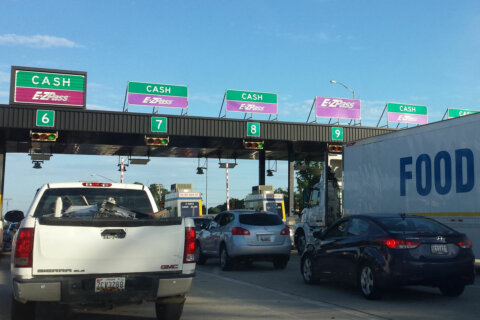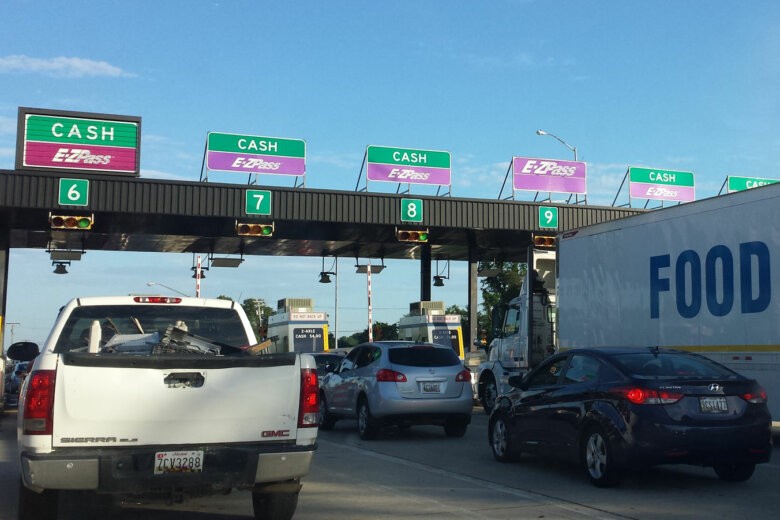
The Chesapeake Bay Bridge isn’t going cash-free quite yet, but it made a move closer to that Sunday night when the Maryland Transportation Authority began taking down three of the toll booths drivers approach as they make their way to the Eastern Shore.
Crews began to work to dismantle the toll booths at the Bay Bridge, according to Tamory Winfield, a spokesman for the MDTA. That means toll lanes 3, 4 and 5 will be permanently closing.
“We are expecting minimal impact to traffic,” added Winfield, since “the other remaining toll lanes will still be open for motorists to travel through.”
The rest of the toll lanes on the bridge will still be open as normal and drivers will still be able to pay cash to cross the bridge. The toll booths are coming down so the E-ZPass lanes can be widened to allow more traffic to flow through there easier.
Those lanes will be permanently closed and work will be happening day and night there, which means the entrance to the bridge will become an active work zone. Winfield urges motorists to obey posted speed limits and watch for construction workers at the base of the bridge.
The goal is to have bridge tolls go all-electronic by the start of summer 2020.
That means later this year, you’ll also see work done on the Kent Island side of the bridge, where crews will erect gantries that will read E-ZPass responders, or license plates of cars that don’t have one, as they come off the bridge.
It’s similar to what you drive under on the ICC or the Interstate 495 express lanes in Virginia, and that’s when the toll will be collected once that work is finished on the bridge. It’s not clear exactly when that work will happen though.
“The immediate thing is that we’re going to be working on the toll lanes to eventually widen those toll lanes so that motorists, when they go through once we go to cashless, it’ll be more of a smoother flow for traffic with wider toll lanes,” said Winfield. “Once the gantries are installed on the Kent Island side and activated, the toll booths will be removed.”
But even after that, there will be lots of work to do before the trip is as smooth as anyone who has sat in those backups has dreamed about.
“The project is going all the way to 2022, and it includes construction, demolition and roadway reconstruction,” said Winfield.
But eventually the day will come when you’ll never have to slow down as you approach the bridge, and instead can keep on driving at highway speed as traffic allows.









